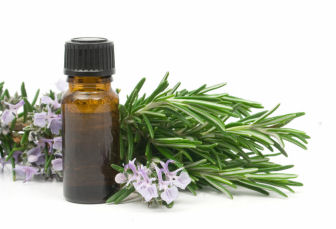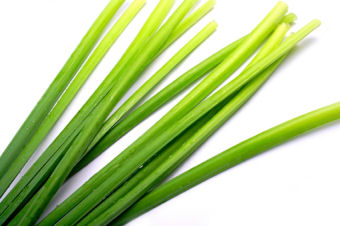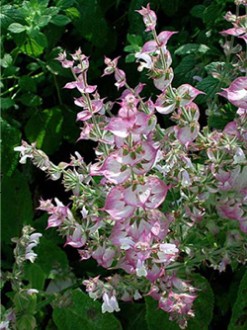There have been many new items coming into our product line. Many of them have had us anxiously anticipating their arrival.
We added a few new essential oils that are really great for your hair, and we recommend then being used as part of your hair regimen.
Our essential oils are 100% pure, and must only be used in small amounts. Make sure to take note on any warnings regarding the use of certain essential oils. All warnings and details will be clearly written out at the Henna Sooq website, under each product, and we welcome feedback/comments.
We recommend they be put directly into your henna or herbal recipe, or add a few drops into your hair oil (or create your own personalized hair oil with some of our oils).
For Hair: Lemongrass is particularly beneficial for oily hair, and helps promote body and shine.
Other uses: Lemongrass is known for its invigorating and antiseptic properties. It can be used used in facial toners as it’s astringent properties help fight acne and greasy skin. An excellent anti-depressant, lemongrass tones and fortifies the nervous system and can be used in bath for soothing muscular nerves and pain. Lemongrass shares similar properties with citronella and has a great reputation for keeping insects away.
For hair: Clary sage, is known to cleanse greasy hair as it helps control excessive oil secretions. It is very effective in treating dandruff, dry skin, dry hair. When used as a scalp massage, clary sage oil encourages hair growth, and minimizes hair loss. It can also coat the hair shaft, and improve shine. This is a benefical oil to be added to your henna and herbal hair recipe.
Other uses: Clary Sage oil is viewed by aromatherapists as an antidepressant, and antispasmodic, deodorant, emmenagogue, hypotensive, nervine, sedative, tonic and uterine. It is well known for providing a euphoric action, for balancing uterine issues and there is also some documentation of its effectiveness in helping to relax the spasms of asthma. This oil promotes the regeneration of skin cells, helping to ward off wrinkles and keep skin looking healthy and youthful. It also improves acne and seborrhea.

For hair: Rosemary is used in hair care to stimulate hair growth and improves most scalp problems, particularly dandruff and seborrhea. It nourishes the scalp and keeps hair looking healthy and shiny.
Other uses: Rosemary is credited as stimulating and warming actions and can be used in numerous skin care products. It is said to have antiseptic and antimicrobial properties. It is used to balance intense emotions and control mood swings. It lifts spirits, counters depression and assist in managing stress.
These new oils can be found at the Henna Sooq under our Hair Oils or Essential Oils categories.



















The fruits of the Argan tree are green. They look like an olive but are larger and rounder.
Inside, there is a hard shell nut which represents about one quarter of the flesh fruit weight. The nut can contain up to three kernels from which the argan oil is extracted.
The production of this oil is a demanding and laborious process which was until recently completely realized by hand.
The manual method consisted in first, extracting the nut of the fruit then cracked the hard nut’s shell to collect the kernels. These were roasted by mild heating and once cooled, ground in a stone rotary quern.
Latter the kernels were hand-mixed with mild water to form a dough. It was from the dough that had been obtained that the oil would be extracted by hand.
Recently mechanical presses have been introduced to extract argan oil. This process reduces considerably the time needed to extract 1 liter of oil.
Once the kernels are roasted, the mechanical press takes care of the grinding and extraction. More oil is extracted and since no water is added to press the dough, the oil can be stocked longer.
The most consuming time of the process, cracking the nuts, is still realized by hand.
Neither solvant nor heat is used for this oil extraction. This oil is a cold first pressed oil which means a high nutritive quality.
The argan oil is slightly darker than olive oil and has a nutty flavor.
Fatty acids are classified in three groups: saturated, monounsaturated and polyunsaturated. (Understand their name and chemical structures).
Oils are made up of a mixture of these three groups but one is always predominant and determines its classification.
As an example, olive oil which contains 13.5 % saturated fatty acids, 73.7 % monounsaturated fatty acids and 8.4 % polyunsaturated fatty acids is classed in the monounsaturated group.
Monounsaturated fatty acids reduce blood levels of LDLs (“bad cholesterol”) without affecting HDLs (“good cholesterol”) as long as they are used as replacement of saturated fatty acids.
Polyunsaturated fatty acids reduce blood levels of LDLs but HDLs too. However they must be part of our diet since they provide the essential fatty acids: linoleic acid and alpha linolenic acid.
In the body polyunsaturated fatty acids are important for maintaining the cell’s membranes and making prostaglandins and leukotirenes.
The composition of argan oil is quite alike peanut oil’s composition: predominately monounsaturated fat with omega-6 fatty acids but no omega-3.
Its high content in oleic acid makes this oil particularly interesting in the regulation of blood cholesterol. Some studies are being done and it seems that 2 Tbsp per day of this oil during a month could considerably lower cholesterol levels.
Argan oil is rich in the essential fatty acid, linoleic acid. This acid is converted in the body in other fatty acids which lead to the production of series 1 prostaglandins.
Arachidonic acid leads to the production of series 2 prostaglandins whereas alpha linolenic acid and its derivatives produce series 3 prostaglandins.
Prostaglandins participate in many body’s functions, including immune, inflammatory process as well as blood clotting.
Prostaglandins 1 (from linoleic acid) and 3 (from alpha linolenic acid) have similarly effects which are stimulating circulation (vaso-dilatation, reducing blood clot…), strengthening the body’s natural defenses, and suppressing inflammation.
Prostaglandins 2 have the opposite effects which we want to limit.
A diet rich in linoleic acid increases the production of prostaglandins 1 and thus is benefic for people with rheumatologic conditions and cardio vascular problems.
Oil rich in polyunsaturated fatty acids have greater tendency than other oil toward oxidation and rancidity. Oxidized oil contain free radicals that promote arterial damage, cancer, inflammation, premature aging of cells and tissues.
Argan oil is rich in polyunsaturated fatty acids but fortunately also contains large amounts of vitamin E . This vitamin is a powerful antioxidant that quenches free radicals and neutralizes destructive oxidation.
The negative point about argan oil is that it does not contain alpha linolenic acid. This essential fatty acid is as important as the others and must be part of the diet. Argan oil cannot be the only oil in your kitchen. It is important to rely on rape seed and soybean oil for this acid.
How to use this oil?
Oils high in polyunsaturated fatty acids must not be heated.
Instead, we recommend steaming or broiling your food and adding the oil afterwards, for flavor only. You can also use it sparingly in salad dressing.
It is better to keep the oil refrigerated and consume it quickly once you open the bottle.
Prefer small and opaque bottles.
Argan oil is also used in the preparation of Amlou (which has aphrodisiac virtues), a mix of almonds, honey and argan oil. It is delicious on toasts.
This oil is also used for its cosmetic properties